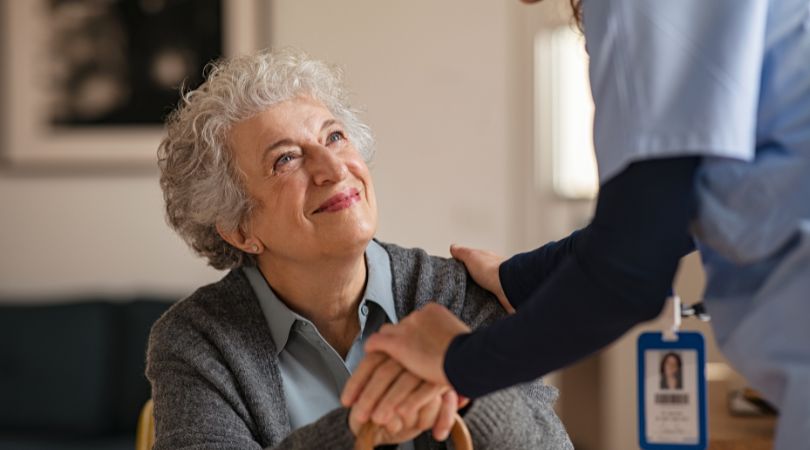As we age, our bodies become more susceptible to falls, which can have severe consequences for the elderly. In fact, falls are one of the leading causes of injury and hospitalisation among older adults. Fortunately, advancements in technology have given rise to assistive solutions that can help mitigate the risks associated with falls. Two essential components of these solutions are fall detection and fall prevention. While they may sound similar, it is crucial to understand the key differences between them. In this post, we’re looking at the distinction between fall detection and fall prevention and highlighting their significance in promoting the independence and safety of elderly individuals.
Fall Detection:
Fall Detection Systems are designed to promptly identify when an individual has experienced a fall. These systems employ various technologies, such as wearable devices, motion sensors, and artificial intelligence algorithms, to detect changes in body position, acceleration, or orientation. When a fall is detected, the system automatically generates an alert or alarm to notify caregivers, family members, or emergency services.
The primary objective of fall detection is to ensure a rapid response in emergency situations. By detecting falls in real-time, these systems provide immediate assistance to individuals who may be injured, disoriented, or unable to seek help on their own. They act as an additional layer of security, especially when the person is alone or in circumstances where immediate human intervention is not possible.
Fall Prevention:
Mitigating risks and enhancing safety, on the other hand, fall prevention focuses on minimising the likelihood of falls occurring in the first place. These solutions aim to create safer environments and promote independence by addressing the underlying risk factors that contribute to falls.
Fall prevention strategies encompass a range of interventions, including:
- Environmental modifications: Identifying potential hazards in the living space and making necessary adjustments, such as removing clutter, improving lighting, and installing grab bars or handrails.
- Assistive devices: Providing tools and aids, such as walking canes, walkers, or stairlifts, to enhance stability and mobility.
- Exercise and balance programs: Encouraging regular physical activity and engaging in exercises specifically designed to improve strength, balance, and coordination.
- Medication management: Reviewing medications to identify potential side effects or interactions that may increase the risk of falls.
- Vision and hearing assessments: Regular check-ups to ensure optimal sensory function, as vision and hearing impairments can significantly affect balance and spatial awareness.
By focusing on fall prevention, individuals can reduce their susceptibility to falls, maintain their independence, and improve overall safety in their daily lives.
The Synergy between Fall Detection and Fall Prevention:
While fall detection and fall prevention are distinct concepts, they complement each other in providing comprehensive solutions for the elderly. Integrating both approaches enhances the overall effectiveness of assistive technology in promoting safety and well-being.
For instance, a fall detection system such as Eila Connect can quickly alert caregivers or emergency services when a fall occurs, enabling timely response and medical attention. Simultaneously, fall prevention strategies can be implemented to mitigate the risk of future falls, reducing the likelihood of similar incidents happening again.
At Eila Connect, we understand the significance of both fall detection and fall prevention in enabling elderly individuals to live independently and confidently. Our assistive technology solutions combine state-of-the-art fall detection capabilities with personalised fall prevention strategies. Our system includes range of products, including wearable devices, smart sensors, and comprehensive monitoring systems, that seamlessly integrate in a non-intrusive manner.
With Eila Connect’s advanced technology, families and caregivers can gain peace of mind, knowing that their loved ones are protected by real-time alerts should the worst happen. Get in touch if you’d like to learn more at 01-4567947 or info@eilaconnect.ie


